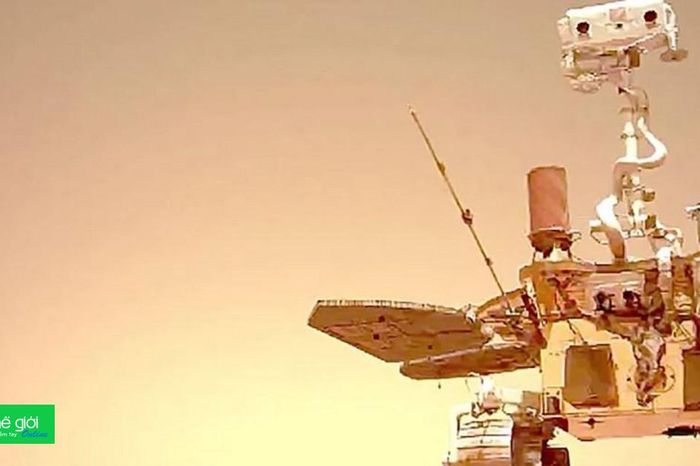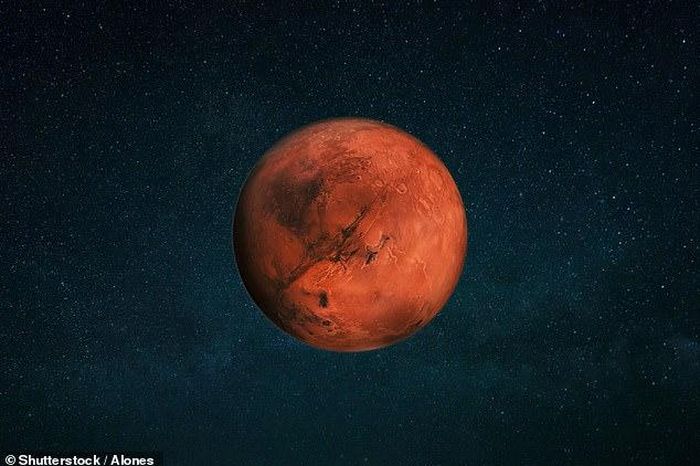Miniature reactor - a solution to supply energy to lunar bases
Like many other science fiction films, the TV series Space 1999 premiered in the 1970s and was a huge hit. The film tells the story of a nuclear explosion that tears the Moon out of Earth's orbit and sends Lunar Base Alpha and its scientists on an exciting adventure through deep space.
Surely, this movie left an impression on young Elon Musk. In 2017, when envisioning SpaceX's plan for a future Moon base, Mr. Musk named this base Alpha. Currently, SpaceX is working with the US Aeronautics and Space Administration (NASA) to bring humans back to the surface of the Moon as part of the Artemis program.
NASA and the US State Department have issued combined guidelines for peaceful lunar exploration in the form of the Artemis Accords. So far, 36 countries – including India, Japan, the UK, Canada, Australia, the United Arab Emirates and South Korea – have participated.
China is also leading the race to build a base on the Moon. Among them, the International Lunar Research station, established in 2021, currently has Russia, Belarus, Pakistan, Azerbaijan, Venezuela, Egypt and South Africa working together.
Observers say that no matter which alliance builds the first base on the Moon, it will need a reliable source of energy. Around the world, many companies and space agencies have come to similar conclusions.
Mr. Simon Middleburgh at the Department of Nuclear Futures at Bangor University in Wales emphasized: 'In truth, nuclear is the only option to provide energy for a Moon base.'
A day on the Moon is not 24 hours like on Earth but lasts a month, exactly 29.5 days. In fact, there are two weeks of daylight followed by two weeks of darkness, with temperatures reaching -130 degrees Celsius.
This is why the Apollo missions from 1969 to 1972 all took place on lunar days and near the Moon's equator, when temperatures could be controlled and prolonged sunlight could power the spacecraft. Scientific equipment and probes.
At the Moon's South Pole, where there is the most potential for a base, certain locations are illuminated by the Sun more than 80% of the time. But temperatures can drop further in permanently shadowed craters where frozen water can be found. This water is needed not only to help astronauts survive but also to produce fuel because there is no gas or oil on the Moon.
'Nuclear is the only thing of concern on the Moon. We can't get fuel up there. Solar panels will not work. Diesel generators won't work and old-fashioned radio heaters aren't big enough to generate power,' Mr. Middleburgh said.
In 1969, the first radioisotope heater was used on the Moon aboard Apollo 11, using heat generated from the decay of radioactive plutonium-238 to keep scientific instruments at temperature. can work. On Apollo 12, this heat was converted into electricity to power a package of equipment, marking the first use of a nuclear reactor on the Moon, although not on an Earthly scale. This cylindrical generator has dimensions of only 45.7 x 40.6cm.
A micro-nuclear reactor would have to be light and sturdy enough to travel 384,400 km and then be installed for use in extremely harsh conditions on the lunar surface - including penetrating fine dust or rock cover.
In 2022, NASA signed a contract with Lockheed Martin, Westinghouse and IX, collaborating with Intuitive Machines and X-Energy to develop a nuclear reactor on the Moon.
The first phase was completed in February, with the presentation of designs for a reactor that could sustain a lunar base for at least a decade.
Mr. Shatel Bhakta, leader of the lunar architecture team at NASA's Johnson Space Center, said: 'We are confident because we have used nuclear technology in previous space missions such as Pioneer, Voyager and Cassini, where these systems far exceed their original design life'.
According to him, the harsh environment, the desire to minimize mass and volume, high reliability and ensuring continuous power to keep the crew safe, are some of the factors that went into the reactor design. impact on the surface of the Moon. In addition, due to the distance from Earth and communication delays, the system had to be designed automatically, with minimal human intervention.
Meanwhile, in March, Russia's Roscosmos space agency announced it would build a nuclear reactor on the Moon with the China National Space Administration by 2035 to provide power for the base. common on the Moon.
Yury Borisov, Director General of Roscosmos, told Russian state media that the base would be built 'without human presence'.
The UK Space Agency also announced new funding worth $3.6 million for the design of a lunar module nuclear reactor. For more than 60 years, Rolls-Royce has quietly designed, manufactured and supported all of the nuclear reactors for the Royal Navy's submarines.
Jake Thompson, chief engineer for Rolls-Royce's New Nuclear programme, said: 'We have a long tradition of delivering very compact nuclear reactors. So we're bringing that capability into these really exciting new areas like space exploration.'
The Rolls Royce microreactor program is in the concept development stage. This testing is being carried out on prototype components and the aim is to have a model ready to be launched on the Moon by 2029.
'These are fission-based reactor systems so they will use a low-enriched form of uranium. We already have a pretty good idea of what these systems will look like and – especially for space – how much they will weigh. Each Rolls Royce microreactor will generate 50-100 kW of power and operate for at least a decade,' Mr. Thompson said.
He said it depends on the architectural and infrastructure needs on the lunar surface, but plans to have a microgrid with a few solar-supplemented reactors in Antarctica.
According to him, the microreactor will be roughly the size of a family car and weigh several tons. For a nuclear reactor, this size is extremely small. But for a space system, they are still relatively large. Miniaturized reactors are what many organizations see as 'key' to a successful design, including the Nuclear Futures Institute, which is collaborating on the Rolls-Royce project.
He said: 'We will only deploy a system when the system is safe in every aspect, including launch, and the reactor is only designed to turn on when it actually reaches the lunar surface. Before the reactor is turned on, the nuclear fuel inside will be in an inert state. It is completely safe to hold and touch and is not radioactive until that reactor is turned on.'
As part of the design process, engineers are also considering the end-of-life processes of these microreactors.
Mr Bhakta said: 'Once our lunar reactor mission is complete, we will shut it down and the radiation levels will gradually reduce so that it can be safely accessed and transferred to a storage site. long term if desired'.
Funding and time to perfect these technologies are needed, but the applications of microreactor designs on the Moon could extend to Earth - from flexible power modules, which can be small much more than existing power plants, up to nuclear medicine.
Mr. Middleburgh, very optimistic about technology in space and on Earth, said that humanity has had many nuclear renaissances but needs a chance to prove that nuclear is safe and carbon-free at home. time of supply.
'These applications are amazing if we can show people that nuclear can be delivered on time, on budget and do interesting useful things – things that will save the world gender', he said.
 Experts are confident that China can surpass the US to become the first country to bring samples from Mars to Earth
Experts are confident that China can surpass the US to become the first country to bring samples from Mars to Earth Nokia is about to bring 4G network to the Moon
Nokia is about to bring 4G network to the Moon NASA found traces of methane gas near a crater on Mars
NASA found traces of methane gas near a crater on Mars The Voyager 1 spacecraft sent signals to Earth for the first time in 5 months
The Voyager 1 spacecraft sent signals to Earth for the first time in 5 months The Voyager 1 spacecraft resumes sending technical updates back to Earth
The Voyager 1 spacecraft resumes sending technical updates back to Earth Hubble telescope discovers more than 1,000 new asteroids
Hubble telescope discovers more than 1,000 new asteroids